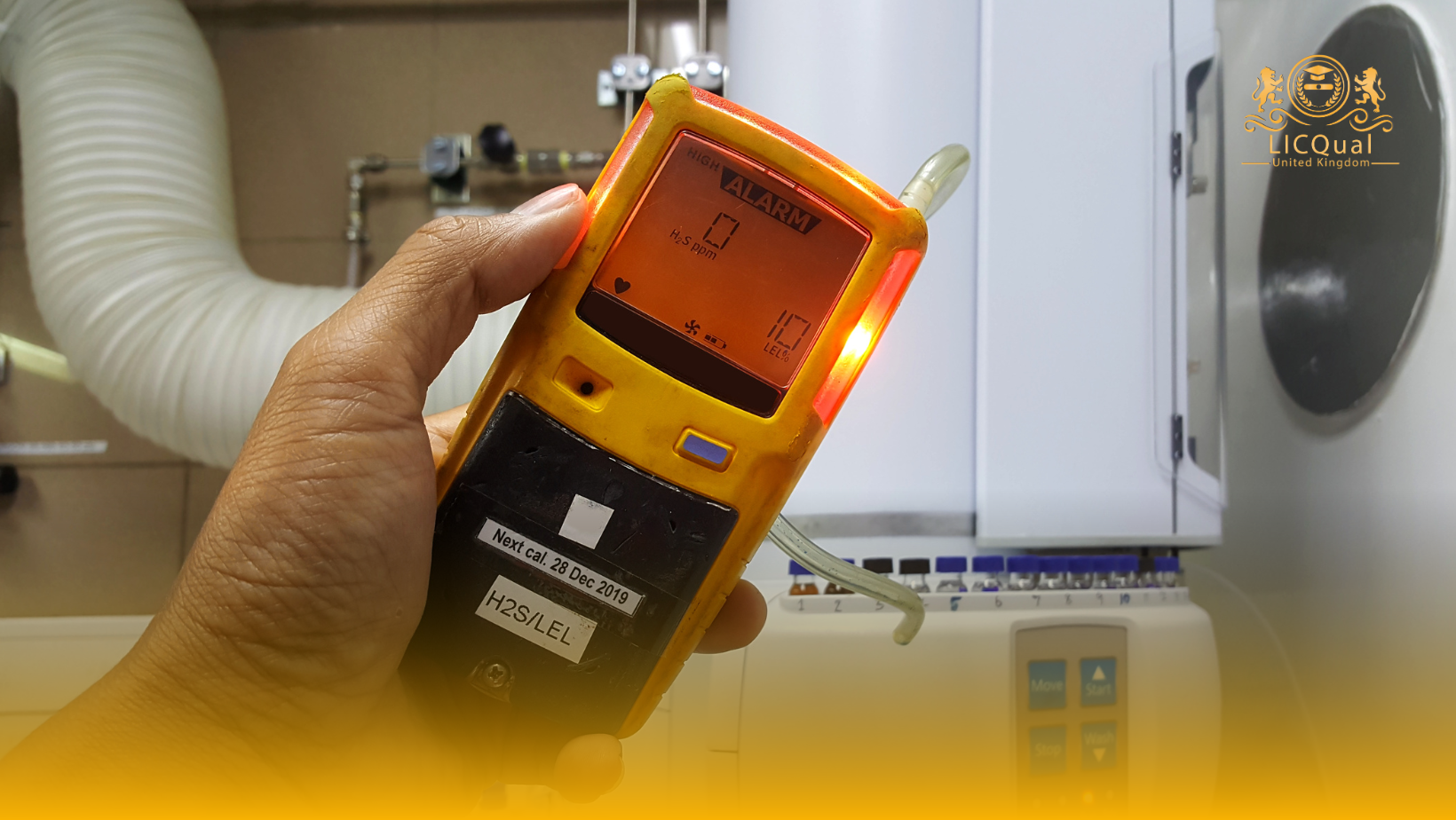In industries where hazardous gases are present, safety is not just a priority—it is a necessity. The LICQual Level 1 Award in H2S Safety is a foundational training program designed to provide learners with critical knowledge and skills to recognize, assess, and respond to Hydrogen Sulfide (H2S) exposure risks. This course introduces participants to the essential safety protocols and protective measures required to work safely in environments where H2S gas may be present, ensuring personal and workplace safety.
Hydrogen Sulfide is a highly toxic and potentially deadly gas that can pose serious threats in oil and gas, petrochemical, wastewater treatment, and other industrial settings. The LICQual Level 1 Award in H2S Safety aims to build awareness of the properties of H2S, the risks associated with exposure, and the emergency procedures that must be followed. Through structured content and practical examples, learners will gain a strong understanding of gas detection systems, personal protective equipment (PPE), and evacuation protocols.
This internationally recognized certification offers a comprehensive yet accessible approach to H2S safety training. Whether you are a new entrant to high-risk industries or someone looking to update their safety credentials, the LICQual Level 1 Award in H2S Safety provides essential preparation for safer workplace operations. The course content is aligned with global occupational safety standards, ensuring relevance across a wide range of job roles and industry sectors.
The course is delivered through an engaging mix of theoretical instruction and scenario-based learning, making it suitable for individuals with no prior safety training. Participants will explore key topics such as the identification of H2S sources, symptoms of exposure, and first response actions. By the end of the training, learners will be better equipped to work confidently and responsibly in H2S-prone environments, making a meaningful contribution to their organization’s safety culture.
Earning the LICQual Level 1 Award in H2S Safety is more than just obtaining a certificate—it’s a commitment to protecting lives and promoting a safe working environment. This course lays the foundation for further development in health and safety practices and serves as a valuable asset for career progression in hazardous industries. Whether you’re pursuing safety roles or operational positions, this certification signals your readiness to handle one of the most dangerous workplace hazards with knowledge and care.
Course Overview
Qualification Title
LICQual Level 1 Award in H2S Safety
Total Units
6
Total Credits
6
GLH
12
Qualification #
LICQ2200444
Qualification Specification
To enroll in the LICQual Level 1 Award in H2S Safety applicants must meet the following criteria:
|
Qualification# |
Unit Title |
Credits |
GLH |
|---|---|---|---|
|
LICQ2200444-1 |
Introduction to H2S and Its Properties |
1 |
2 |
|
LICQ2200444-2 |
Health Hazards and Symptoms of H2S Exposure |
1 |
2 |
|
LICQ2200444-3 |
Basic Detection and Monitoring Methods |
1 |
2 |
|
LICQ2200444-4 |
Personal Protective Equipment (PPE) Basics |
1 |
2 |
|
LICQ2200444-5 |
Evacuation Procedures and Emergency Response |
1 |
2 |
|
LICQ2200444-6 |
Safety Signs, Labels, and General Precautions |
1 |
2 |
By the end of this course,applicants will be able to:
1. Introduction to H2S and Its Properties
Explain the physical and chemical properties of Hydrogen Sulfide (H2S) and its sources in industrial environments.
Describe the characteristics of H2S including its smell, flammability, and density.
Identify common locations and processes where H2S may be generated or released.
Understand the significance of H2S properties in the context of workplace safety and risk management.
2. Health Hazards and Symptoms of H2S Exposure
Recognize the short-term and long-term health effects of H2S exposure on the human body.
Identify symptoms of low, moderate, and high-level exposure to H2S gas.
Understand the progression of symptoms from mild irritation to respiratory failure.
Explain first aid and immediate response measures in the event of H2S exposure.
3. Basic Detection and Monitoring Methods
Understand the importance of gas detection systems in controlling H2S hazards.
Identify different types of detection equipment used for monitoring H2S levels.
Describe how fixed and portable detectors function and where they are deployed.
Interpret readings from monitoring devices and understand threshold limits.
4. Personal Protective Equipment (PPE) Basics
Identify various types of PPE used in H2S-prone environments, including respirators and gas masks.
Demonstrate basic knowledge of PPE selection based on exposure level and job role.
Understand the correct usage, limitations, and maintenance of PPE.
Explain the importance of fit-testing and regular inspection of protective equipment.
5. Evacuation Procedures and Emergency Response
Explain standard evacuation procedures in response to H2S gas leaks.
Identify the roles and responsibilities of personnel during an emergency situation.
Describe how to use emergency escape breathing devices (EEBDs) and follow alarm protocols.
Understand the importance of muster points, communication protocols, and accountability systems.
6. Safety Signs, Labels, and General Precautions
Interpret safety signs, labels, and color codes relevant to H2S risk zones.
Identify the purpose and placement of hazard signage in work environments.
Explain how visual warnings contribute to awareness and compliance with safety protocols.
Apply general safety precautions and housekeeping practices to minimize H2S risks.
This diploma is ideal for:
- Individuals entering industries where Hydrogen Sulfide (H2S) exposure is a potential risk
- Workers in oil and gas, petrochemical, wastewater treatment, mining, and construction sectors
- Health and safety officers seeking foundational knowledge in H2S hazard management
- Site supervisors and team leaders responsible for ensuring safe work environments
- New employees requiring induction-level H2S safety training
- Contractors and temporary staff working in H2S-prone locations
- Anyone seeking to improve personal safety awareness in hazardous gas environments
Assessment and Verification
All units within this qualification are subject to internal assessment by the approved centre and external verification by LICQual. The qualification follows a criterion-referenced assessment approach, ensuring that learners meet all specified learning outcomes.
To achieve a ‘Pass’ in any unit, learners must provide valid, sufficient, and authentic evidence demonstrating their attainment of all learning outcomes and compliance with the prescribed assessment criteria. The Assessor is responsible for evaluating the evidence and determining whether the learner has successfully met the required standards.
Assessors must maintain a clear and comprehensive audit trail, documenting the basis for their assessment decisions to ensure transparency, consistency, and compliance with quality assurance requirements.

